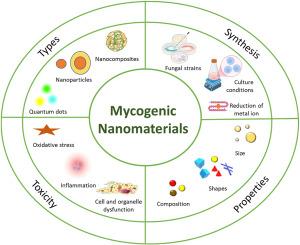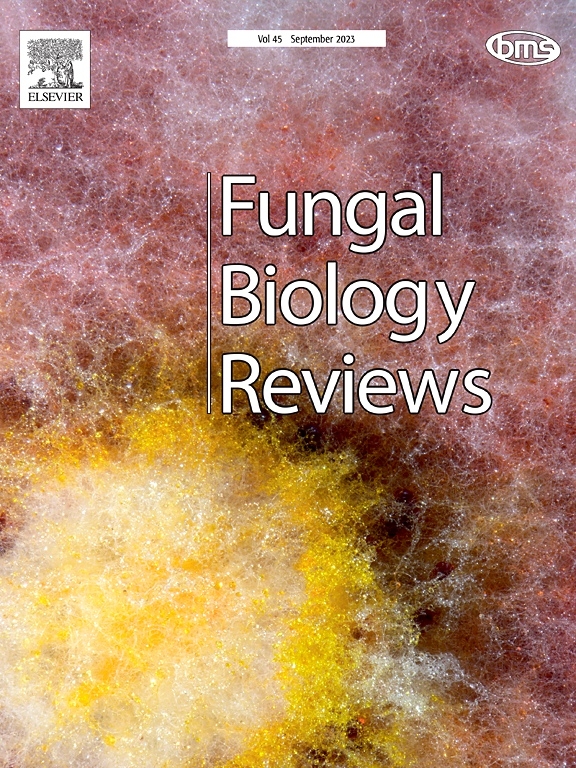真菌介导的纳米材料:进展、合成途径和局限性
IF 4.6
2区 生物学
Q1 MYCOLOGY
引用次数: 0
摘要
真菌纳米技术涉及利用真菌进行1-100纳米尺寸范围内纳米材料的生物合成。真菌释放的生物活性化合物在纳米材料合成中起还原剂或封盖剂的作用。真菌介导的纳米材料因其可持续、高效、低成本和生态友好的特性而备受关注。本文讨论了真菌在金属纳米粒子、量子点和纳米复合材料制造中的应用。它进一步提供了合成机理的详细检查,包括深入讨论各种合成路线和影响纳米材料性能的因素。对纳米材料的局限性和挑战及其对人类健康和生态系统的毒性进行了批判性分析。还强调了对真菌源性纳米材料的环境释放和升级潜力的监管框架的必要性。本文章由计算机程序翻译,如有差异,请以英文原文为准。

Fungi-mediated nanomaterials: Advances, synthesis pathways, and limitations
Myconanotechnology involves the utilisation of fungi for the biosynthesis of nanomaterials within the size range of 1–100 nm. The bioactive compounds released by fungi act as reducing or capping agents in nanomaterial synthesis. Fungal-mediated nanomaterials have gained attention owing to their sustainable, efficient, cost-effective, and eco-friendly nature. The present paper discusses the use of fungi in the fabrication of metallic nanoparticles, quantum dots, and nanocomposites. It further provides a detailed examination of the synthesis mechanism, including an in-depth discussion of various synthesis routes and the factors influencing nanomaterial properties. The limitations and challenges of nanomaterials and their toxicity to human health and the ecosystem are critically analysed. The need for a regulatory framework for the environmental release and upscaling potential of mycogenic nanomaterials is also highlighted.
求助全文
通过发布文献求助,成功后即可免费获取论文全文。
去求助
来源期刊

Fungal Biology Reviews
MYCOLOGY-
CiteScore
10.60
自引率
0.00%
发文量
36
期刊介绍:
Fungal Biology Reviews is an international reviews journal, owned by the British Mycological Society. Its objective is to provide a forum for high quality review articles within fungal biology. It covers all fields of fungal biology, whether fundamental or applied, including fungal diversity, ecology, evolution, physiology and ecophysiology, biochemistry, genetics and molecular biology, cell biology, interactions (symbiosis, pathogenesis etc), environmental aspects, biotechnology and taxonomy. It considers aspects of all organisms historically or recently recognized as fungi, including lichen-fungi, microsporidia, oomycetes, slime moulds, stramenopiles, and yeasts.
 求助内容:
求助内容: 应助结果提醒方式:
应助结果提醒方式:


